1. Introduction
The Amazon Rainforest, often referred to as the lungs of the planet, generates nearly 20% of the world's oxygen. Brazil is home to around 60% of the Amazon rainforest. While most of Brazil's population is concentrated along the southeastern coast. However, in recent years, with the expansion of urbanization, land has been cleared for development, resources have been extracted, and wealth has been generated through relentless deforestation. At the same time, influenced by global warming, in 2023, the Amazon forest experienced the worst drought in half a century. El Niño phenomenon has led to shifts in rainfall patterns, a roughly 2°C rise in temperature over recent decades, and the decrease in annual evaporation has led to the expansion of agricultural land and the increase in the frequency of fires, according to the fire data monitored by MapBiomas. A whopping 26.4 million acres (10.7 million hectares) of Brazil's Amazon forests burned in 2023, marking a 35.4% increase from the previous year ( known as the Amazon Rainforest Fires). The Amazon is showing signs of deepening environmental degradation, and according to researchers at the National Institute for Space Research of Brazil, the Amazon forest now emits about 300 million tons of carbon dioxide, far exceeding its absorption [1]. Human activity has caused irreversible damage to the forest. Even though the government has realized the importance of protecting the forest in the past years, leading to a significant reduction in deforestation rates, political complexities in Brazil have hindered the progress of environmental protection legislation and the rights of indigenous peoples. This article draws on previous studies to analyze the problems faced by the Amazon forest today focusing on key data points such as tree cover, temperature, and relative humidity. By examining various environmental factors, this paper aims to assist the Brazilian government in finding a balance between economy growth and environment conservation and in taking proactive measures to address the crisis.
2. Changes in climatic conditions
In recent decades, rainfall patterns in Brazil have been abnormal, with annual precipitation decreasing by 10 to 40 percent, mainly in the northeast and east of Brazil, and increasing by 10 to 30 percent in southern Brazil [2].
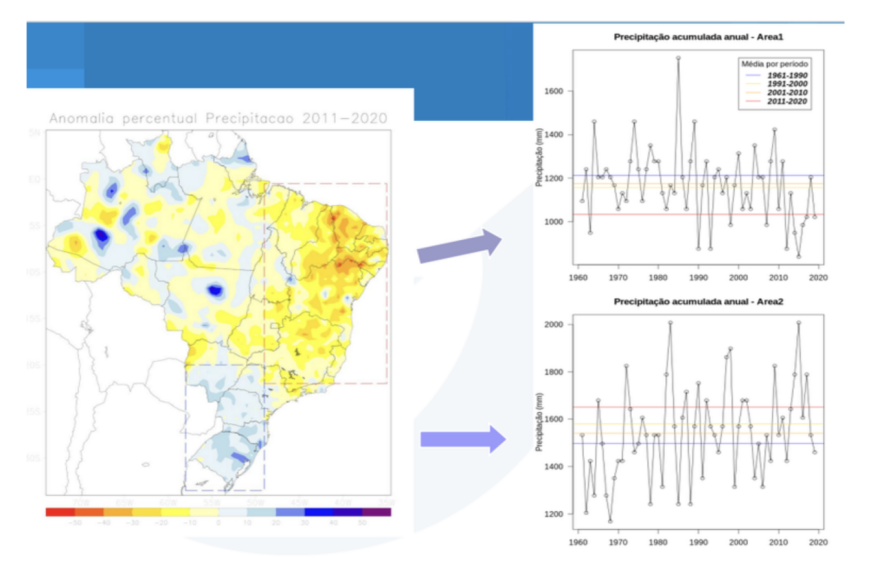
Figure 1. Precipitation Distribution Map of Some Regions in Brazil [2]
According to the survey, the occurrence of droughts and floods is because of the periodic fluctuations in surface temperatures in the central and eastern equatorial Pacific [3].
There are two types of El Niño, namely the eastern and central types, both of which have profound impacts on global climate change. When the peculiar warm center appears in the eastern equatorial Pacific region, it is referred to as the eastern type of El Niño, and when it occurs in the central equatorial Pacific region, it is known as the central type. From 2023 to 2024, multiple regions around the globe have been impacted by the El Niño event (the eastern type), notably in southern Asia, southern Africa, southern South America, and southern North America, where precipitation has been above average. In contrast, northern areas of these continents and Australia have experienced below-average rainfall [3].
Meanwhile, over the past four decades, the annual average temperature in the Amazon rainforest has significantly increased (Although it's possible that some areas in the western Amazon may have experienced cooling). Notably, in the southeastern and central parts of the Amazon (within Brazil), temperature have increase by 1.5℃ and 2℃, which increases the risk of carbon release from the soil and increases the likelihood of forest fires [4].

Figure 2. Drought Classification across the Amazon basin [5]
Brazil experienced its most severe drought in half a century in 2023. According to Luciana Gatti, a climate change researcher at Brazil's National Institute for Space Research (INPE), drought conditions can be caused by the following reasons:
The first reason is the uneven regional precipitation. This year's El Niño climate pattern led to drought in the northern part of the rainforest and flooding in the south. Additionally, ocean temperatures are rising. The abnormal warming of the North Atlantic affected the Intertropical Convergence Zone — a complex process involving climate change and changes in ocean current systems. Besides, human activities also contribute significantly to these conditions.
Deforestation has stripped the forests of their ability to regenerate. At the same time, extreme droughts make forests more susceptible to fires.
In general, changes in climatic conditions are mainly driven by global warming and human activities, such as deforestation. In terms of precipitation, deforestation could reduce rainfall by about 10%-20% in the Amazon forest region [6], while climate models predict that under the influence of global warming, precipitation in the Amazon region could decrease by 10%-15% by 2100 [7].
At the same time, the contribution of human activities to the decline in relative humidity is estimated at 5%-10% [8], while the contribution of global warming to the decline in relative humidity is estimated at 3%-7% [9].
The significant increase in temperature in the Amazon forest region is predominantly a result of global warming, and human destruction of the forest undoubtedly exacerbates this process.
3. Deforestation and Disturbance Occurrences
The destruction of forests can result from activities like logging and fires. The table below clearly illustrates the extent of forest loss across various countries, with Brazil experiencing the most severe loss of forested land [10]
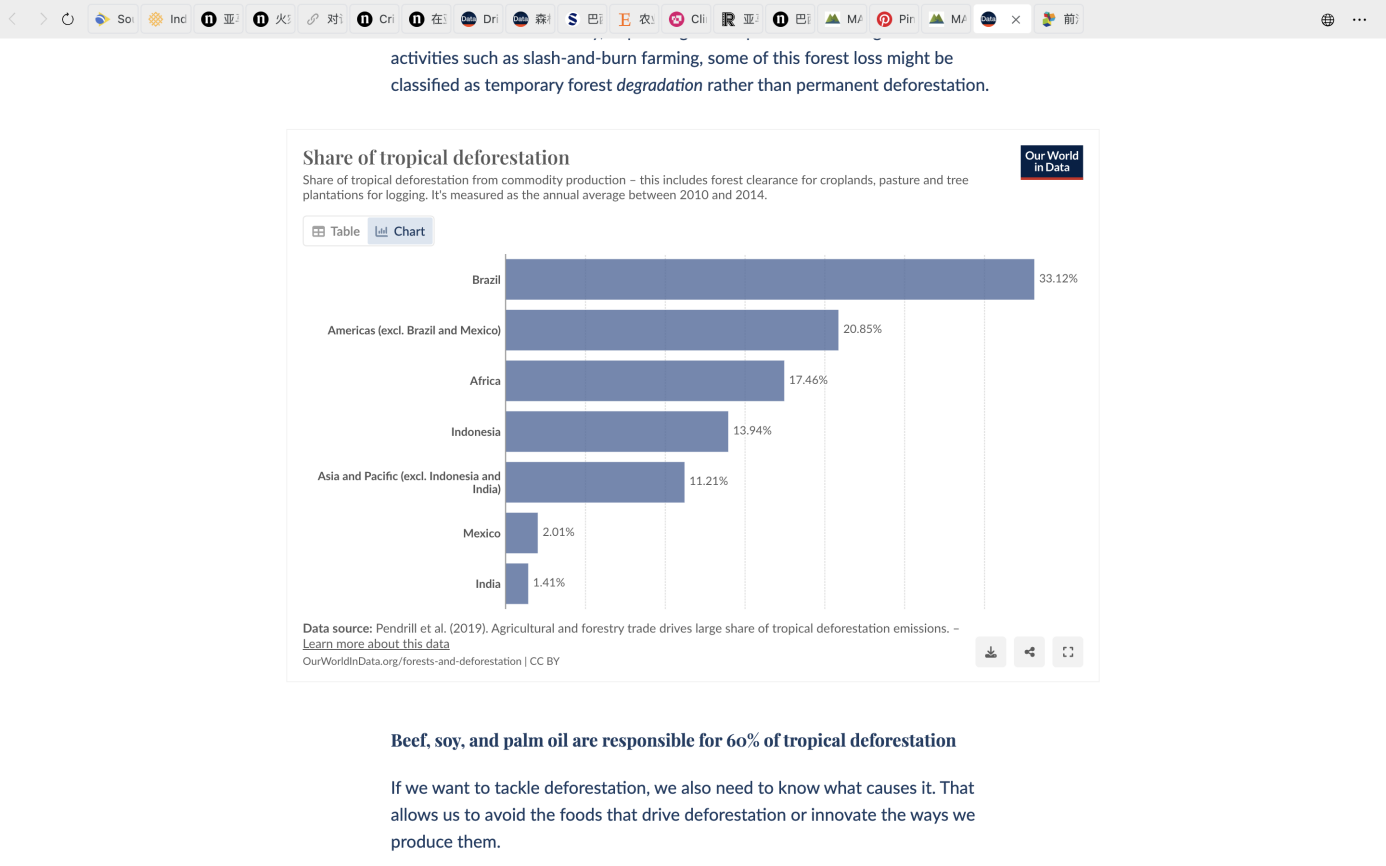
Figure 3. Agricultural and forestry trade drives large share of tropical deforestation emissions [10]
In the past, to promote economic development, the government heavily encouraged the development of agriculture and animal, leading to further expansion into the Amazon forest. However, this approach quickly resulted in environmental degradation. But fundamentally, deforestation is driven by a combination of factors, including political issues such as land ownership and use policies, as well as economic factors such as low land and labor costs, and rising prices of cash crops and timber [11].
All of these conditions have contributed to the accelerated deforestation of the Brazilian Amazon forest area.
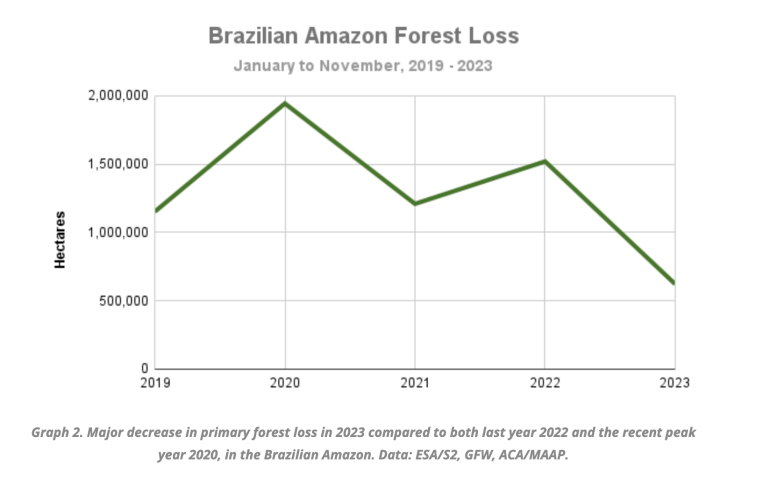
Figure 4. Tree felling in the Amazon forest in Brazil[11]
In 2023, deforestation rate in the Brazilian Amazon decreased by 50% compared to the previous year. Despite a significant decrease in forest loss is due to human activities, the impact of fires on the forest remains substantial. Unlike regions such as California or the Mediterranean, where fires are largely caused by natural conditions, the Amazon's moist and rainy environment means that wildfires are rarely naturally occurring. Instead, Human activities serve as the primary trigger, with arsonists setting forests ablaze, leading to the deterioration and drying out of the forest. This increasingly arid climate intensifies the spread of fires, allowing them to grow even larger. According to EU satellite imagery, thick smoke from burning forests in Brazil has even drifted into neighboring countries like Peru and Bolivia. The release of carbon dioxide and carbon monoxide from these fires further exacerbates global warming [12].
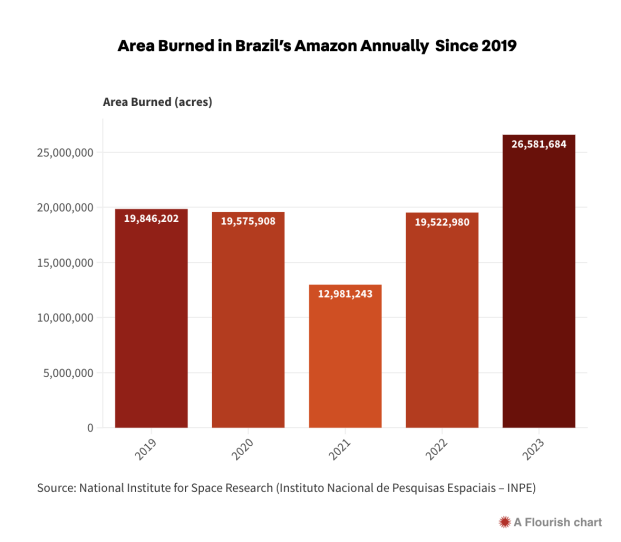
Figure 5. The area burned in the Brazilian Amazon in recent years [12]
4. Causes and measures of
4.1. Causes of Forest Destruction
To effectively protect rainforests, it is crucial to understand the activities that contribute to deforestation. In the journal "Global Environmental Change", scholars like Florence Pendrill and U. Martin Persson have explored how the expansion of farmland and pastures leads to forest loss. Detailed data reveals that around 72% of deforestation in Brazil is driven by cattle farming, with other contributing factors including soy, palm oil, and paper production.
One indirect factor contributing to deforestation is the large-scale felling of trees to support Brazil’s soybean industry. However, according to the University of Oxford's Food Climate Research Network (FCRN), more than 77% of soybeans are used as livestock feed, with only a tiny fraction (2%) going toward beef and dairy production. In an effort to protect the local ecosystem, major global commodity traders signed the Brazilian Soy Moratorium (SoyM) in 2006, a treaty driven by various sectors of society [13]. The treaty aims to ensure that soybeans grown on illegal or legal deforested land cannot be sold to suppliers. This has helped reduce forest loss linked to soybean cultivation. While the expansion of cattle pastures for beef production remains the leading cause of deforestation in Brazil, soybean farming continues to play an indirect role. Ultimately, the land needed for soybean cultivation must come from somewhere, potentially displacing not just forests but also existing pastures.
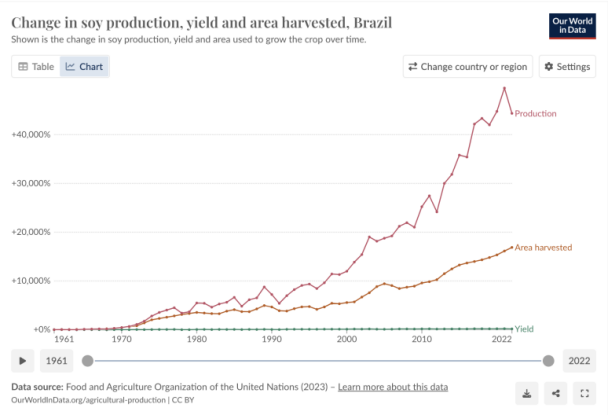
Figure 6. Change in soy production, yield and area harvested [10]
4.2. Implementation measures
Given the current climatic conditions of the Amazon Rainforest in Brazil caused by fires and deforestation driven by agriculture and livestock, the Brazilian government needs to address these challenges in several ways.
Community support: Strengthening the protection of Indigenous peoples' rights is essential. Indigenous communities, primarily of American Indian descent, play an important role in forest conservation. The government should engage in a dialogue with Indigenous leaders to collaborate on finding solutions.
Legal norms: The legal protection system needs to be reinforced to combat illegal land occupation, and the number of forest patrols should be increased. In Brazil, vast areas of forest land are considered public and lack special legal protections, making them vulnerable to illegal occupation or illegal logging by criminals. In past years, some illegal gold prospectors have invaded these lands, causing devastating damage not only to the rainforest but also to indigenous communities. The government must take action by implementing stricter laws and imposing severe penalties on those who destroy the forest.
Market surveillance: The Brazilian government should establish nature reserves to promote sustainable economic and environmental development. At the same time, there needs to be stronger regulation of local animal husbandry, such as requiring local slaughterhouses and supermarkets to sell only products with proper compliance certifications. Increasing fines for violations will also help enhance market oversight.
5. Conclusion
This paper explores the climate changes in Brazil’s Amazon Rainforest over recent decades. Analyzing trends in precipitation, relative humidity, and temperature sheds light on the challenges the Amazon faces. The increasingly arid climate has undoubtedly created conditions that fuel fires. Furthermore, fires caused by human activities are often driven by economic motivations, such as the development of livestock farming. The Brazilian government should take actions to ensure the sustainable development of the Amazon Rainforest. Moving forward, it is crucial to gather more accurate data through field surveys to better understand the respective impacts of global warming and human activities on deforestation. Protection the tropical rainforest is an urgent matter, and governments must strike a balance between economic development and environmental preservation.
References
[1]. Gatti, L. V., Cunha, C. L., Marani, L., Cassol, H. L., Messias, C. G., Arai, E., ... & Machado, G. B. (2023). Increased Amazon carbon emissions mainly from decline in law enforcement. Nature, 621(7978), 318-323.
[2]. “Southern Brazil Has Seen an Increase of up to 30% in Average Annual Rainfall over the Last Three Decades.” Planalto, www.gov.br/planalto/en/latest-news/2024/05/southern-brazil-has-seen-an-increase-of-up-to-30-in-average-annual-rainfall-over-the-last-three-decades.
[3]. “Dialogue with meteorological experts on Scientific understanding of El Nino - China Meteorological Administration government portal.” www.cma.gov.cn/2011xwzx/2011xqxxw/2011xqxyw/202404/t20240415_6197523.html. Accessed 29 July 2024.
[4]. Flores, Bernardo M., et al. “Critical Transitions in the Amazon Forest System.” Nature, vol. 626, no. 7999, 1 Feb. 2024, pp. 555–564, www.nature.com/articles/s41586-023-06970-0, https://doi.org/10.1038/s41586-023-06970-0. Accessed 15 Feb. 2024.
[5]. World Weather Attribution. “Climate Change, Not El Niño, Main Driver of Exceptional Drought in Highly Vulnerable Amazon River Basin – World Weather Attribution.” World Weather Attribution, 24 Jan. 2024, www.worldweatherattribution.org/climate-change-not-el-nino-main-driver-of-exceptional-drought-in-highly-vulnerable-amazon-river-basin/.
[6]. Spracklen, D. V., et al. “Observations of Increased Tropical Rainfall Preceded by Air Passage over Forests.” Nature, vol. 489, no. 7415, Sept. 2012, pp. 282–285, https://doi.org/10.1038/nature11390.
[7]. Marengo, Jose A., et al. “The Drought of 2010 in the Context of Historical Droughts in the Amazon Region.” Geophysical Research Letters, vol. 38, no. 12, June 2011, p. n/a-n/a, https://doi.org/10.1029/2011gl047436.
[8]. Nepstad, Daniel C, et al. “Interactions among Amazon Land Use, Forests and Climate: Prospects for a Near-Term Forest Tipping Point.” Philosophical Transactions of the Royal Society B: Biological Sciences, vol. 363, no. 1498, 27 May 2008, pp. 1737–1746, www.ncbi.nlm.nih.gov/pmc/articles/PMC2373903/, https://doi.org/10.1098/rstb.2007.0036.
[9]. Aragão, Luiz E. O. C., et al. “Environmental Change and the Carbon Balance of Amazonian Forests.” Biological Reviews, vol.89, no. 4, 20 Feb. 2014, pp. 913–931, https://doi.org/10.1111/brv.12088.
[10]. Ritchie, Hannah, and Max Roser. “Drivers of Deforestation.” Our World in Data, 2021, ourworldindata.org/drivers-of-deforestation.
[11]. “MAAP #201: Amazon Deforestation & Carbon Update for 2023.” MAAP, 28 Nov. 2023, www.maaproject.org/2023/amazon-deforestation-carbon/.
[12]. “Amazon Rainforest Fires.” Rainforest Foundation US, rainforestfoundation.org/engage/brazil-amazon-fires/#:~:text=Despite%20these%20statistics%2C%20a%20staggering.
[13]. Boucher, Doug, et al. “Brazil’s Success in Reducing Deforestation.” Tropical Conservation Science, vol. 6, no. 3, Aug. 2013, pp. 426–445, https://doi.org/10.1177/194008291300600308.[1]
Cite this article
Zhao,Y. (2024). The analysis of climate change and human activities in the Brazilian Amazon forest. Theoretical and Natural Science,65,29-34.
Data availability
The datasets used and/or analyzed during the current study will be available from the authors upon reasonable request.
Disclaimer/Publisher's Note
The statements, opinions and data contained in all publications are solely those of the individual author(s) and contributor(s) and not of EWA Publishing and/or the editor(s). EWA Publishing and/or the editor(s) disclaim responsibility for any injury to people or property resulting from any ideas, methods, instructions or products referred to in the content.
About volume
Volume title: Proceedings of ICBioMed 2024 Workshop: Computational Proteomics in Drug Discovery and Development from Medicinal Plants
© 2024 by the author(s). Licensee EWA Publishing, Oxford, UK. This article is an open access article distributed under the terms and
conditions of the Creative Commons Attribution (CC BY) license. Authors who
publish this series agree to the following terms:
1. Authors retain copyright and grant the series right of first publication with the work simultaneously licensed under a Creative Commons
Attribution License that allows others to share the work with an acknowledgment of the work's authorship and initial publication in this
series.
2. Authors are able to enter into separate, additional contractual arrangements for the non-exclusive distribution of the series's published
version of the work (e.g., post it to an institutional repository or publish it in a book), with an acknowledgment of its initial
publication in this series.
3. Authors are permitted and encouraged to post their work online (e.g., in institutional repositories or on their website) prior to and
during the submission process, as it can lead to productive exchanges, as well as earlier and greater citation of published work (See
Open access policy for details).
References
[1]. Gatti, L. V., Cunha, C. L., Marani, L., Cassol, H. L., Messias, C. G., Arai, E., ... & Machado, G. B. (2023). Increased Amazon carbon emissions mainly from decline in law enforcement. Nature, 621(7978), 318-323.
[2]. “Southern Brazil Has Seen an Increase of up to 30% in Average Annual Rainfall over the Last Three Decades.” Planalto, www.gov.br/planalto/en/latest-news/2024/05/southern-brazil-has-seen-an-increase-of-up-to-30-in-average-annual-rainfall-over-the-last-three-decades.
[3]. “Dialogue with meteorological experts on Scientific understanding of El Nino - China Meteorological Administration government portal.” www.cma.gov.cn/2011xwzx/2011xqxxw/2011xqxyw/202404/t20240415_6197523.html. Accessed 29 July 2024.
[4]. Flores, Bernardo M., et al. “Critical Transitions in the Amazon Forest System.” Nature, vol. 626, no. 7999, 1 Feb. 2024, pp. 555–564, www.nature.com/articles/s41586-023-06970-0, https://doi.org/10.1038/s41586-023-06970-0. Accessed 15 Feb. 2024.
[5]. World Weather Attribution. “Climate Change, Not El Niño, Main Driver of Exceptional Drought in Highly Vulnerable Amazon River Basin – World Weather Attribution.” World Weather Attribution, 24 Jan. 2024, www.worldweatherattribution.org/climate-change-not-el-nino-main-driver-of-exceptional-drought-in-highly-vulnerable-amazon-river-basin/.
[6]. Spracklen, D. V., et al. “Observations of Increased Tropical Rainfall Preceded by Air Passage over Forests.” Nature, vol. 489, no. 7415, Sept. 2012, pp. 282–285, https://doi.org/10.1038/nature11390.
[7]. Marengo, Jose A., et al. “The Drought of 2010 in the Context of Historical Droughts in the Amazon Region.” Geophysical Research Letters, vol. 38, no. 12, June 2011, p. n/a-n/a, https://doi.org/10.1029/2011gl047436.
[8]. Nepstad, Daniel C, et al. “Interactions among Amazon Land Use, Forests and Climate: Prospects for a Near-Term Forest Tipping Point.” Philosophical Transactions of the Royal Society B: Biological Sciences, vol. 363, no. 1498, 27 May 2008, pp. 1737–1746, www.ncbi.nlm.nih.gov/pmc/articles/PMC2373903/, https://doi.org/10.1098/rstb.2007.0036.
[9]. Aragão, Luiz E. O. C., et al. “Environmental Change and the Carbon Balance of Amazonian Forests.” Biological Reviews, vol.89, no. 4, 20 Feb. 2014, pp. 913–931, https://doi.org/10.1111/brv.12088.
[10]. Ritchie, Hannah, and Max Roser. “Drivers of Deforestation.” Our World in Data, 2021, ourworldindata.org/drivers-of-deforestation.
[11]. “MAAP #201: Amazon Deforestation & Carbon Update for 2023.” MAAP, 28 Nov. 2023, www.maaproject.org/2023/amazon-deforestation-carbon/.
[12]. “Amazon Rainforest Fires.” Rainforest Foundation US, rainforestfoundation.org/engage/brazil-amazon-fires/#:~:text=Despite%20these%20statistics%2C%20a%20staggering.
[13]. Boucher, Doug, et al. “Brazil’s Success in Reducing Deforestation.” Tropical Conservation Science, vol. 6, no. 3, Aug. 2013, pp. 426–445, https://doi.org/10.1177/194008291300600308.[1]









